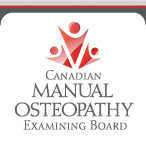Jeff Maitland's Spinal Manipulation Made Simple
Top 4 Keys To Understanding Low Back Pain:
Top 4 Keys To Understanding Low Back Pain:
- A joint (facet) restriction can show no obvious signs of pain and then suddenly rear its painful countenance at the most inopportune times. - You arise from a chair to greet a friend and suddenly there's that stabbing pain in your back again. Back pain can come and go, but the problem almost always remains.
- Many make the mistake of thinking that during those periods when their pain disappears that their problem also goes away. - But the problem doesn't disappear with the pain; and the unfortunate illusion that it does often misleads people into ignoring their back problems.
- If left untreated, most back problems only get worse as time and gravity take their unforgiving toll on our bodies. - For many people, before their first episode of low back pain, there were larger overall patterns of imbalance in their bodies, probably their legs were not providing adequate support, and there were dysfunctional adaptations to old injuries and to gravity. - Then the fatal day arrived when they passed their critical threshold by bending over and slightly twisting (sidebending) to pick something up. During this movement, their vertebra slipped a little too quickly and a little too far past what was normal. The nervous system registered the danger and sent the muscles and ligaments into a fearful spasm thereby locking up the vertebrae by creating a joint (facet) restriction.
- How does a healthy back work? - If your spine has no joint (facet) restrictions, when you forward bend, your facets slide open in an accordion like fashion and when you back bend they slide closed. As you forward bend each vertebra in relation to the one inferior to it, slides slightly superiorly and anteriorly. When you back bend the opposite occurs: each vertebra slides slightly inferiorly and posteriorly.

Try This Exercise To Get A Feeling For How The Spine Works:
- Stand up and place your thumbs on your hips. If you have a history of back pain and your back is presently in trouble you may not want to try this exercise. But if you are game, first bend way forward and then sidebend to the right. As you sidebend to your right, your left thumb is forced out a bit while your right thumb sinks in a little. Now sidebend the other way and notice that just the opposite occurs.
- What you are feeling is your vertebra rotate as you sidebend. So while standing or sitting, if you sidebend right, your vertebra will rotate left and if you sidebend left, your vertebra will rotate right.
- If you have a history of back trouble you may notice that the vertebral movement you are monitoring with your thumbs is not exactly the same as you sidebend right and left. This discovery may be no surprise to you; and it probably means you have a joint (facet) restriction that is inhibiting normal motion through the area. It may be the source of your back pain.
"I have developed a number of very effective soft tissue techniques that are the subject of my book, Spinal Manipulation Made Simple: A Manual of Soft Tissue Techniques," says Maitland. "The technique releases joint fixations gently without resorting to the high velocity thrusting techniques commonly used in low back manipulation."










 Master PCMH Criteria with Upcoming Webinars
Master PCMH Criteria with Upcoming Webinars







 The American Osteopathic Association (AOA) is the representative organization for the over 70,000 osteopathic physicians (DOs) and 18,000 osteopathic medical students in the United States. The organization promotes public health, encourages scientific research, serves as the primary certifying body...
The American Osteopathic Association (AOA) is the representative organization for the over 70,000 osteopathic physicians (DOs) and 18,000 osteopathic medical students in the United States. The organization promotes public health, encourages scientific research, serves as the primary certifying body...










 9:29
9:29
 Daniel Enriquez de Guevara
Daniel Enriquez de Guevara













.jpg)


















0 comentarios:
Publicar un comentario